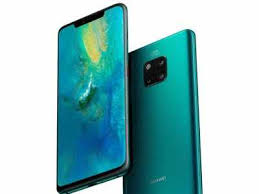Computech-Electronics/ NEWS / LATEST NEWS / HUAWEI P30 PRO REVIEW: SMARTPHONE PHOTOGRAPHY,REDEFINED
Huawei P30 Pro review: Smartphone photography, redefined
ARTICLE | BY RAY DAVIS | APRIL 6, 2019 6:54 AM PDT

Smartphone cameras have become great in the last decade, but there are still some things they can't do. In fact, I bet these shortcomings have unconsciously trained many of us to avoid taking photos in certain situations: dimly lit restaurants, starry skies, a squirrel sitting in a tree — why bother taking a photo if you know the shot is going to look like crap?
The Huawei P30 Pro is here to change this notion.
It can zoom in like a DSLR, and it can quickly snap low-light photos that would normally require a tripod and a lot of patience. It has every feature you can imagine, and then some. In short: The phone can take photos that other smartphones can only dream of.
The Huawei P30 is not, strictly speaking, Huawei's flagship smartphone. Those honors belong to the Mate series, with new models likely coming in October. But the P30 Pro is a better phone than last year's Mate 20 Pro — and the vast majority of today's phones — in almost every regard.
It has the same Huawei Kirin 980 chip, it comes with 6 or 8GB of RAM and 128, 256, or 512GB of storage, and has a massive 4,200 mAh battery with super fast charging and wireless charging, as well as reverse wireless charging.
The P30 Pro also has a huge, 6.47-inch OLED screen that's curved on the sides, a tiny water drop-shaped notch on top (the phone's screen doubles as a close-proximity speaker, removing the need for a top speaker), an in-display fingerprint scanner, a face recognition system, and IP68 water/dust resistance. It runs Android 9 Pie and Huawei's latest EMUI 9.1 software.
Tiny concessions
With the amount of features smartphones come with these days, the details matter — and there are a few things that the P30 Pro lacks. First, its screen resolution is 2,340 x 1,080, giving it a pixel density of 398 ppi, which is alright, but not on par with the best smartphones. In practice, this means the screen, while still plenty sharp, isn't as amazingly sharp as the screens of the Mate 20 Pro, the iPhone XS Max or the Samsung Galaxy S10+.
That's it — the above are all the significant features I could think of that the P30 Pro doesn't have. To me, none of these are crucial, but they're noteworthy, as some competitors in a similar price range do have them.
The P30 Pro also doesn't have a stereo speaker (because the top speaker has been replaced by the display itself). It doesn't have a front-facing 3D depth sensor. It also doesn't have a headphone jack, and it does not come with a USB-C to 3.5mm connector dongle.
Like most Huawei phones, the P30 Pro feels rock solid and the curved edges are beautiful, but they make the phone very easy to drop. It's not a distinctive design: With its center-aligned "water drop" notch and a small "chin" bezel, the P30 Pro looks too similar to other phones, and just isn't as attractive as Samsung's Galaxy S10+.
On the back, there's a choice of shiny gradients and a few solid colors. My review unit had the "Breathing Crystal" color, which is a purple-to-blue-to-white gradient that looks quite beautiful but loses its luster once you put the phone into the (included), see-through case. The vertically positioned cameras make the P30 Pro look like an iPhone from the future, but again, the look's not very original.
A revolutionary camera
Something that none of the competitors have is P30 Pro's wonderful quad-camera array on the back, coupled with a 32-megapixel (f/2.0 aperture) selfie camera on the front.
The rear cameras are, in order:
40-megapixel wide angle camera with f/1.6 aperture and optical image stabilization
20-megapixel ultra-wide angle camera with f/2.2 aperture (no OIS)
8-megapixel telephoto camera with 5x optical zoom, f/3.4 aperture and optical image stabilization
a "time of flight" depth sensor
All of that may seem randomly thrown in just to show off, but it's not. The camera system on the P30 Pro has been carefully designed to produce great photos in situations in which smartphones are typically terrible.
By that, I don't mean sunny, outdoor photos. In those conditions, you'll get good photos from nearly any phone, and P30 Pro is just as good as the best of them. By default, it takes AI-enhanced 10-megapixel photos, meaning that it chooses the best settings depending on what you're shooting (in the example below, the "beach" setting was automatically chosen).
I wasn't a fan of Huawei's AI when it was first introduced, but it appears to be getting better. I was consistently getting great photos on default settings, and switching to 40-megapixel mode was mostly unnecessary.